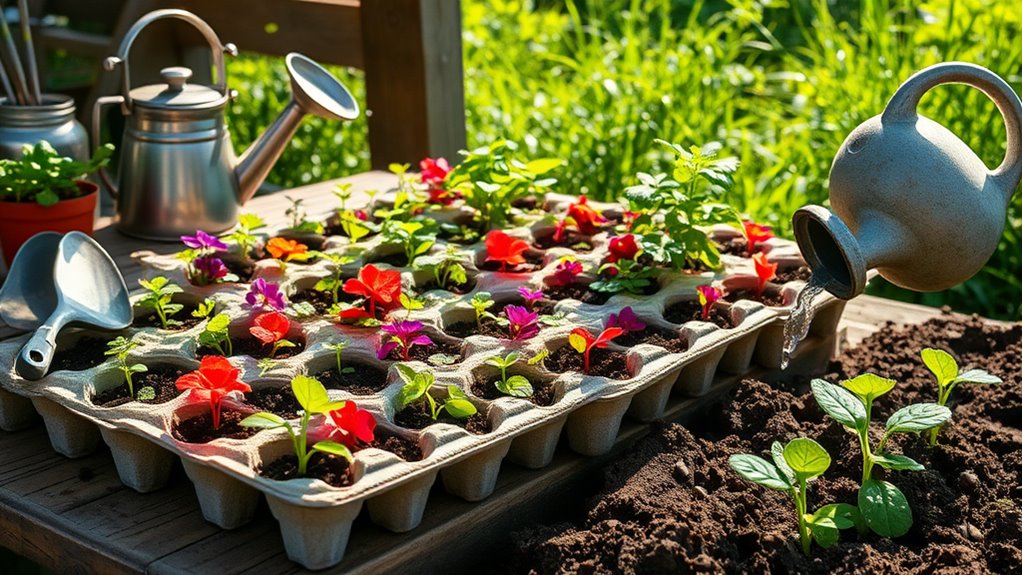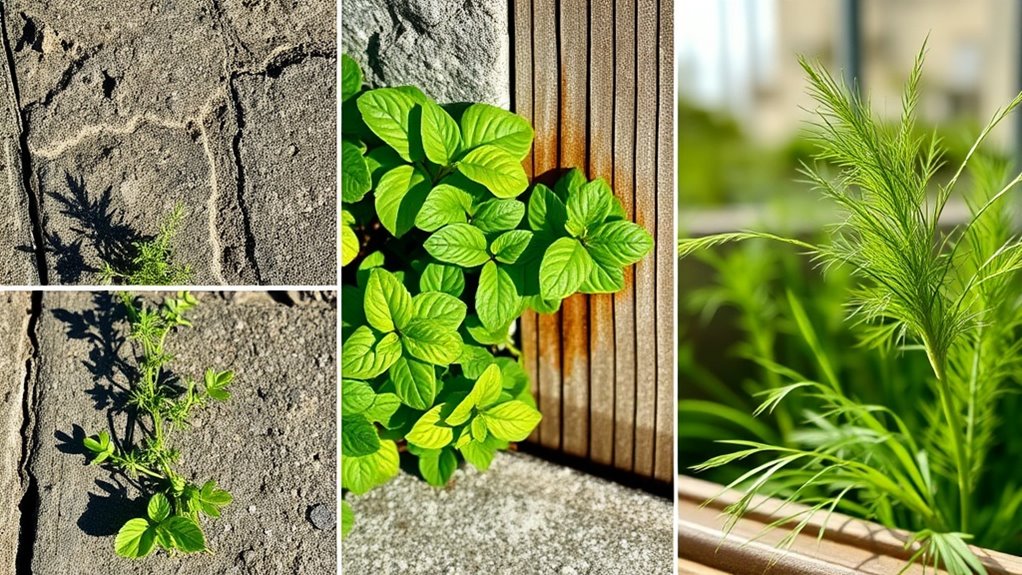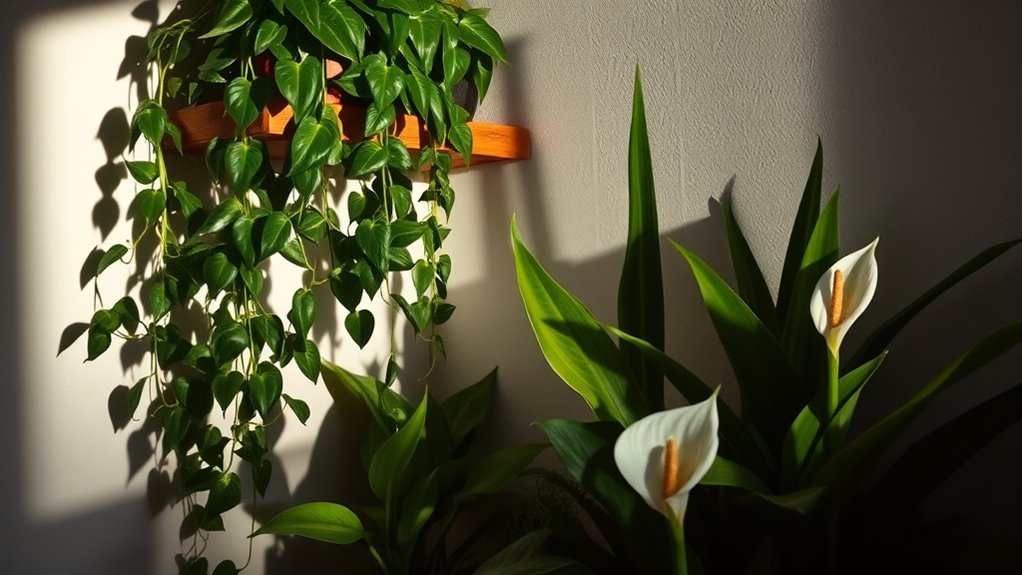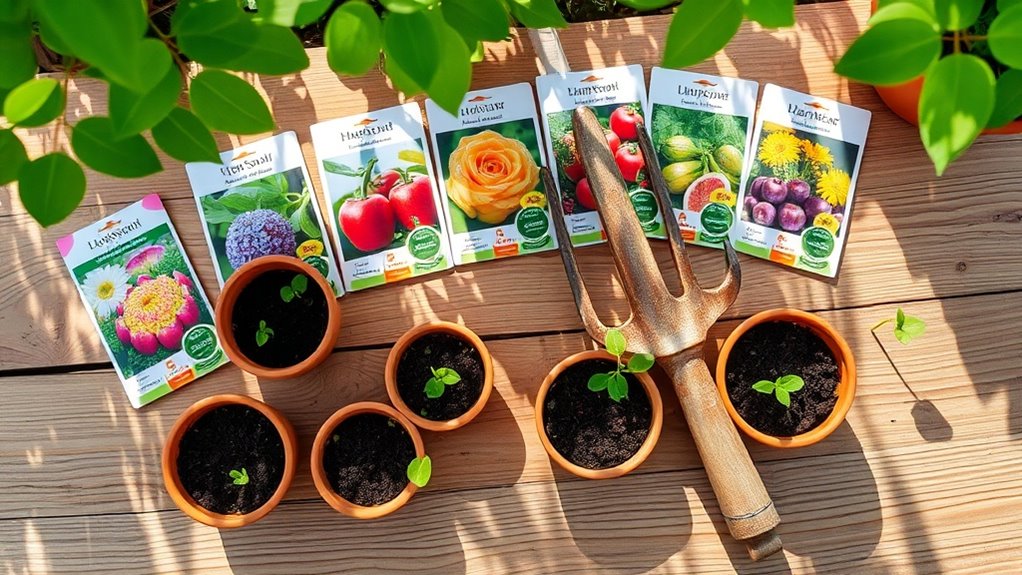Seasonal Planting Hacks You’ll Wish You Knew Sooner
Seasonal planting hacks can truly elevate your gardening game. You’ll learn how to time your crops for optimal growth and discover the benefits of companion planting. Preparing your soil properly is crucial, and understanding pest management can save you headaches down the line. Plus, there are clever techniques to extend your growing season. Ready to uncover these practical tips that can transform your garden?
Key Takeaways
- Start planting cool-season crops like spinach and peas in early spring to take advantage of thawed soil and optimal temperatures.
- Use companion planting, such as pairing tomatoes with basil, to enhance growth and deter pests naturally.
- Regularly test soil pH and nutrient levels to make informed amendments, ensuring optimal plant health and productivity.
- Extend your growing season by using row covers or cold frames to protect plants from chilly nights.
- Implement succession planting by sowing new crops immediately after harvesting to maximize garden output throughout the seasons.
Timing Your Planting for Maximum Growth
When’s the best time to plant for optimal growth?
Timing’s crucial in gardening, and understanding seasonal garden tips can make all the difference.
Generally, spring is ideal for most vegetables and flowers, as temperatures warm up and soil thaws.
However, for cool-season crops like spinach and peas, early spring or late summer is perfect.
Pay attention to your local frost dates; planting too early can damage young plants.
Additionally, consider the specific needs of each plant, such as sunlight and water. Understanding seasonal planting strategies can help you make informed decisions about when to plant different varieties.
Companion Planting: Friends in the Garden
Have you ever wondered how certain plants thrive together in harmony while others seem to struggle?
Companion planting is the key!
By pairing plants that benefit each other, you can boost growth, deter pests, and improve flavor.
For example, plant tomatoes with basil; basil enhances their flavor and repels harmful insects.
Marigolds are great companions for almost any garden because they attract beneficial insects.
Onions and carrots also work well together, as onions repel carrot flies.
Additionally, companion planting can lead to improved overall yield, making your garden even more productive.
Start experimenting with these combinations in your garden, and watch your plants flourish together.
You’ll be amazed at the harmony you create!
Soil Preparation Secrets for Seasonal Success
Companion planting sets the stage for a thriving garden, but the foundation lies in the soil.
To achieve seasonal success, start by testing your soil’s pH and nutrient levels. Amending with compost enriches the soil while improving drainage.
Don’t forget to till the soil to aerate it, ensuring roots can grow freely.
When planting, create raised beds for better drainage and warmth. Incorporate organic matter to retain moisture and enhance fertility.
Lastly, consider mulching to regulate temperature and suppress weeds. Additionally, you can evaluate soil health through simple methods, ensuring your garden thrives throughout the seasons.
With these soil preparation secrets, you’ll set your garden up for lush growth and bountiful harvests each season.
Seasonal Pest Management Tips
How can you effectively manage pests throughout the seasons to protect your plants?
Start with regular inspections to catch infestations early.
In spring, encourage beneficial insects like ladybugs by planting nectar-rich flowers.
During summer, use organic insecticidal soap to tackle aphids and spider mites.
As fall approaches, remove debris to eliminate hiding spots for overwintering pests.
In winter, consider using row covers to shield against pests while keeping plants warm.
Always rotate crops to disrupt pest life cycles.
Lastly, maintain healthy soil by adding organic matter; strong plants are less susceptible to damage. Incorporating natural sprays can further enhance your pest management strategy.
Stay proactive, and your garden will thrive!
Creative Techniques for Extending Your Growing Season
What if you could enjoy fresh produce long after the last frost?
To extend your growing season, consider using row covers or cold frames to protect plants from chilly nights. These methods trap heat, creating a warmer microclimate.
You can also plant cold-hardy crops, like kale or spinach, in early spring and late fall.
Another creative technique is to use raised beds, which warm up faster in spring.
Additionally, implementing seasonal gardening hacks can help you make the most of your growing techniques.
Finally, try succession planting; when you harvest one crop, immediately sow another. By implementing these strategies, you’ll maximize your garden’s potential and enjoy delicious, homegrown produce well beyond traditional growing seasons.





